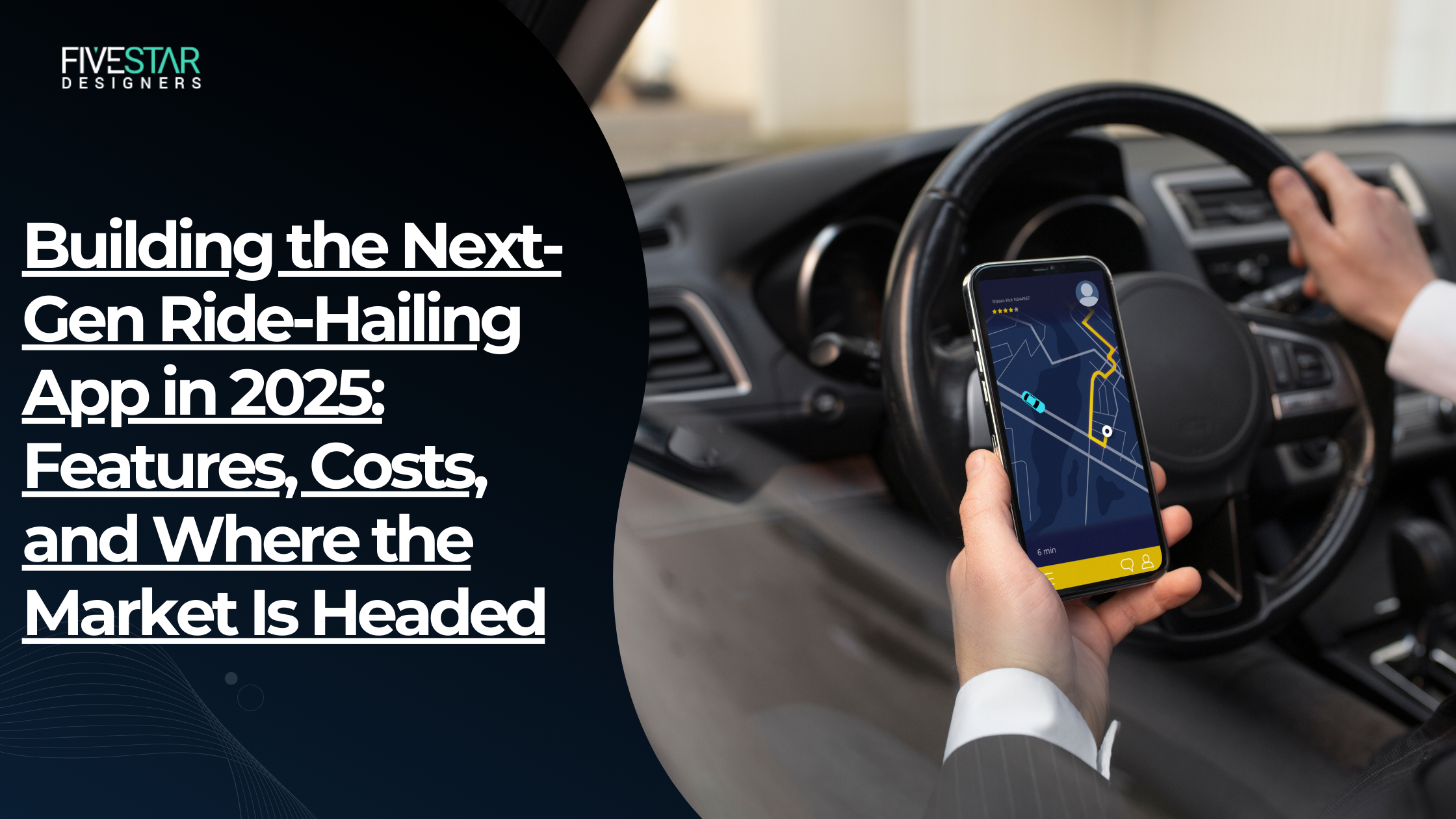With the rise in inflation and unaffordability, a good percentage of people are resorting to cab hailing and taxis rather than trying to acquire their own means of transportation. This opens a new emerging market ready to capitalize on.
Ride-hailing apps are on a tidal rise, and smart investors are benefiting from serious profit. However, developing a taxi app is not as straightforward as it sounds, as there are technical elements such as automated remote-controlled data transmissions, monetization models, and fleet management.
Let’s take an in-depth look at why investing in a taxi product is a good idea, the market competition, and financial management for the app development of your very own ride-hailing app.
Why Launch a Taxi Booking Product Today
Strategic Imperatives and Market Signals
Taxi booking platforms prove to be an excellent strategic investment for businesses that desire direct control over last-mile logistics and customer data, along with profitable gains due to the rising popularity of ride-sharing apps as a result of urbanization, which is expected to increase at a steady pace.
Business Advantages at the Systems Level
Customer Telemetry and Lifecycle Monetization
Data stack autonomy allows businesses to keep track and predict user retention, as such data can be utilized for monitoring changes in demand, along with offering subscription-based services that increase customer lifetime value.
This allows Uber clone app development companies to streamline their app market value without revamping the fundamentals.
Operational Advantage via Modern Driver Dispatch System
Modern dispatch systems are far more efficient than the more commonly used legacy systems, giving new ride-hailing apps the technological edge over existing competitors. Apart from that, dynamic routing, queuing policies, and SLA enforcement simultaneously accentuate profits by decreasing deadhead miles and improving utilization.
Global Popularity and Regional Advantages
Global Industry Giants vs Local Ops Services
Uber has pioneered its dominance in the global market, spanning approximately 70+ countries; however, regional taxi apps have held their own in their respective operational regions.
In fact, despite the absolute display of dominance, most people prefer to use their local taxi app more often than Uber. This boils down to personal preferences and cultural aspects, which oftentimes smart businesses use to their advantage to increase popularity.
Niche Verticals and White-Label Entrants
Beyond giants, there is a proliferation of niche cab booking platforms that target corporate mobility, EV fleets, last-mile logistics, and non-standard vehicle classes. Many startups adopt white-label stacks or partner with a taxi booking software vendor for faster iteration.
The Working Cogs of a Taxi Mobile App
Client Tier and Connectivity Patterns
The app should specifically use native components for GPA calibration to provide more accurate results even in the background. Live event updates with minimum latency require WebSocket or MQTT, which allows for more precise location updates. Finally, adding Edge caching to reduce API requests to ensure fast and snappy computation.
Backend Tier and Scaling Model
Instead of a traditional monolithic approach, the backend is broken down into independent workstations unified into “Microservices,” which handle matchmaking, pricing, payments, and compliance. All this data is simultaneously ingested by different workstations to provide fast and efficient performance.
Integrations and Operational Plumbing
You will integrate with identity providers, payment processors, KYC vendors, and mapping services. Some platforms invest in proprietary mapping and routing to reduce third-party dependency and to optimize local routing heuristics.
Costing a Taxi App in 2025
Ballpark Estimates and Cost Drivers
Estimating a budget is always a difficult call to make, as the cost can vary depending on the complexity of your app and the mobile app development company you choose to partner with.
The defining financial aspect of your app places a heavy focus on the feature library, targeted geographical areas, and compliance overhead.
If we skim through some market analysis, we can find skeletal builds at the lower end of $10k-$15k, whereas fully decked-out ride-hailing apps commonly cross the six-figure line.
Breakdown by Component
Development and QA
Platform engineering for passenger and driver apps, API surfaces, testing automation, and security audits.
Infrastructure and Third-Party Services
Real-time messaging, mapping tiles, payments, and KYC. These are predictable recurring costs, and they scale with transaction volume.
Regulatory and Operational Expenditure
Licenses, insurance, and city permits vary by jurisdiction and sometimes define whether a market is viable at all. Recent regulatory events demonstrate that legal risk can force platform closures unless governance is built into operations.
Execution Plan for Engineering Leads
Pre-Launch Essentials
- Define SLOs for positioning and matching latency.
- Instrument end-to-end tracing for the entire ride lifecycle.
- Conceive a surge model with constraints to avoid churn.
Post-Launch Observability and Iteration
- Continuous A/B testing of pricing heuristics.
- Automated anomaly detection on driver earnings and cancellation rates.
- Fleet electrification features if you plan to support EVs.
Final Takeaways
Ride-hailing app development sounds easy enough, but it has immense technical complexity behind it but if you want to take the initiative and follow through with this business opportunity, partnering with a specialized ride-hailing app development company is mandatory to help you steer clear of the advanced technical obstacles.
So what are you waiting for? Invest in your very own cab-sharing app with 5StarDesigners for highly specialized and polished projects and step into the ride-hailing app industry now!
FAQ:
How much time does taxi booking software usually take to build?
Depending on complexity and integrations, a base MVP often needs 4–6 months. Enterprise-grade platforms with analytics or EV support can exceed a year in full-cycle development.
Why do businesses prefer an Uber clone app development company?
They accelerate deployment through pre-tested modules and existing UX patterns. This reduces technical risk and time to market without compromising scalability.
What future trends will shape cab booking platforms?
We can expect stronger AI-driven pricing, EV optimization, and deeper compliance automation. Decentralized data protocols and contextual mobility services will further redefine urban transport ecosystems.



